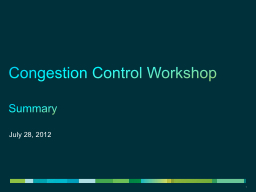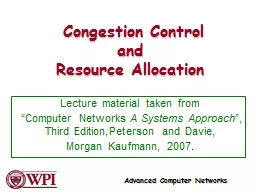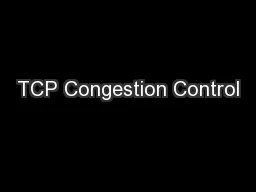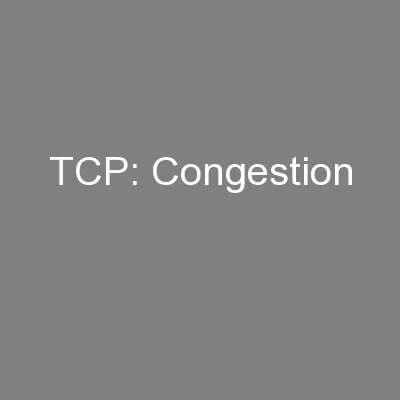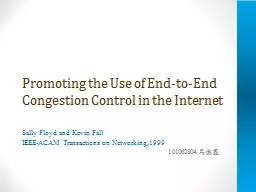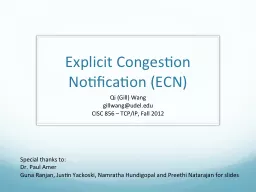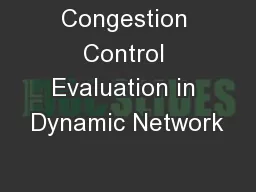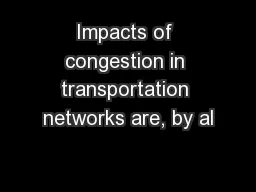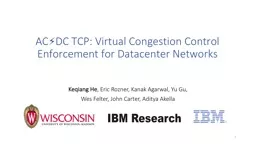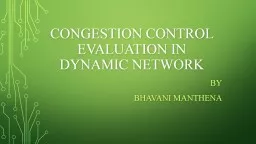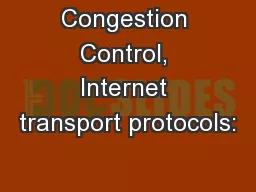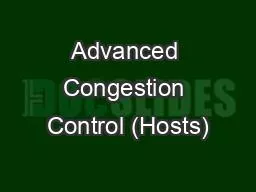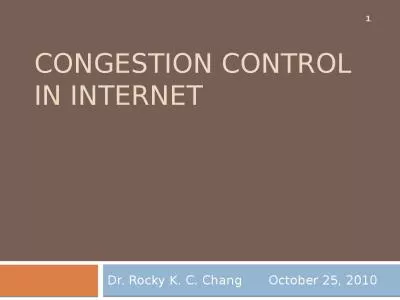PPT-Congestion Control Workshop
Author : joyce | Published Date : 2024-02-03
Summary July 28 2012 What can we do Absent changes to the network can we actually do something Yes Is there work in the area of measurements that can we do to create
Presentation Embed Code
Download Presentation
Download Presentation The PPT/PDF document "Congestion Control Workshop" is the property of its rightful owner. Permission is granted to download and print the materials on this website for personal, non-commercial use only, and to display it on your personal computer provided you do not modify the materials and that you retain all copyright notices contained in the materials. By downloading content from our website, you accept the terms of this agreement.
Congestion Control Workshop: Transcript
Download Rules Of Document
"Congestion Control Workshop"The content belongs to its owner. You may download and print it for personal use, without modification, and keep all copyright notices. By downloading, you agree to these terms.
Related Documents

